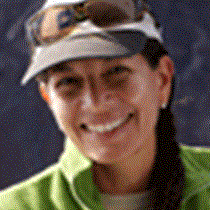Floreana Island
Located in the southern part of the archipelago, Floreana, also known as Charles or Santa Maria, is a peaceful island dotted with numerous extinct volcanic cones amidst a variety of native and endemic vegetation. This particular Island is also known by one of the most interesting and intriguing human history chapters of the Islands: from marooned whalers to prisoners and colonists, and from a toothless dentist to a self-proclaimed empress, almost two centuries ago!
Our day started with an optional pre-breakfast landing at a fascinating beach of olivine sand, at a site named Punta Cormorant. Here we walked along a large brackish lagoon where a couple of flamingos were feeding, as well as pintail ducks, wimbrels and a graceful great blue heron.
Following the trail we arrived at a second beautiful beach of incredibly fine, white, coralline sand, a favorite nesting site for green sea turtles. Several fresh nests were found, turtles were popping their heads continuously on the water and it was easy to distinguish dozens of sting rays close to shore, and on the black lava rocks we saw the vibrant and colorful Sally Lightfoot crabs.
After the early walk, we came back aboard for breakfast while the ship repositioned to a small offshore volcanic cone named Champion Islet, where our Zodiacs were deployed to explore the islet in the search of one of the most rare land birds of the Islands, the Floreana mockingbird, which was once abundant on the main island, but was driven to extinction by cats, rats and other introduced predators.
Following the rocky shores, we were delighted with the view: Opuntia cactus completely covered by yellow orange flowers, like apples in a tree; swallow-tailed gulls feeding their young ones; sea lions resting on the rocks; marine iguanas feeding on the algae; and the always inquisitive brown noddy terns following our movements from the rocky shores.
The rest of the morning we devoted to deep-water snorkeling, where several species of fish where found as well as white-tipped reef sharks, Galápagos sharks, barracudas, wahoos, sea turtles and the always playful sea lions. Glass-bottom boat excursions were also offered for those who wanted to explore the underwater life without getting wet.
After lunch, we offered a couple of kayak outings, followed by Zodiac rides to explore the bay and a sea lion colony. Before sunset, we ended our day with a visit to the famous Post Office Bay, where a barrel is still used for an old mail swap tradition going back to whaling days. Postcards were delivered and a few were collected. The tradition will continue…




